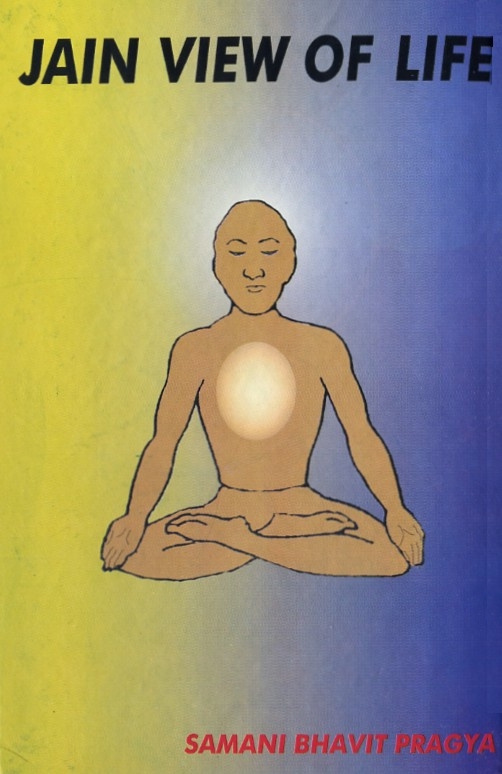Jain Scripture
The Ganadhara, the principle disciples of Lord Mahavira, compiled the speeches of Lord Mahavira into twelve texts as sutras. Those texts are known as Agamas. The Sanskrit word for texts is Anga (Anga Pravista). Twelve Angas are known as Dwadashangi. The authorship of Dwadashangi is attributed to Gandharas. The distinguished preceptors compiled subsidiary work based on Angas known as Upanga (Anga Bahya). The authorship of Upanga is ascribed to distinguished Acharya. The other prominent Acharya prepared auxiliary works that came to be known as Mula sutras, Cheda sutras, Avashyak, etc.
Agamas were not put into writing until one thousand years after the emancipation of Lord Mahavira. Those scriptures were orally passed on from one generation to the next, from preceptor to pupil. Later on they were put into writing.
One hundred and sixty years after the departure of Lord Mahavira, there occurred a severe famine. At that time some monks did life-long fasting which was undertaken to be observed up to death. The chain of canonical knowledge started to reduce. It was hard for the monks to follow the code of conduct laid down by Lord Mahavira. Due to shortage and scarcity of the food, monks started to scatter. When the twelve yearlong famine ended, a council was held at Patliputra under the leadership of Sthulibhadra.
The ascetics assembled there could recollect only eleven Anga. Only Acharya Bhadrabahu possessed knowledge of the twelfth Anga Named Drshtivada. But, at that time, he was performing the practice of Mahaprana meditation in Nepal so he could not participate in the council.
The second council held at Mathura under the chairmanship of Venerable Skandilacharya after 827 - 840 of the liberation of Lord Mahavira. Simultaneously, another council was called at Vallabhi under the presidency of Preceptor Nagarjunasuri. Because of the two conventions, there were some differences in the versions.
The fourth council was held at Vallabhi under leadership of preceptor Devardhigani Kshamashramana after 980 - 993 years of Lord Mahavira. An authorized version was prepared in the council. All the canonical texts were systematically written down.
The credit for editing the available canon goes to Devardhigani Kshamashramana, however, the Digambar denies its authority. As per the Digamber, the original Agamas had been lost after 683 years of salvation of Lord Mahavira. That is why the Digambar community considered the conventional version as unauthentic. For the Digambars, the canonical texts are mainly the Shatakhandagam, the Samayasara, the Niyamasara, the Panchastikaya, etc. At present, the following scriptures authenticity is acceptable in Swetambar tradition.
There are 11 Angas, 12 Upangas, 4 Mulasutras, 4 Chedasutras, and Avashyak.
The Eleven Angas.
- Acharanga sutra
- Sutrakritanga
- Sthanang
- Samavayang
- Vyakhya Pragnapti (Bhagavati Sutra)
- Jnatadharmakatha
- Upasakadasha
- Anatakriddasha
- Anuttraupapatikadasha
- Prashnavyakarana
- VipakShruta (Drshtivada - not availabl
The Twelve Upangas
- Aupapatika
- Rajaprashniya
- Jivajivabhigama
- Prajnapana
- Jambudveepa Prajnapti
- Chandra Prajnapti
- Suryaprajnapti
- Kalpika (Nirayavalika)
- Kalpavatansika
- Puspika
- Puspachulika
- Vrishnidash
Mula Sutras
- Uttaradhyayana
- Dashavaikalika
- Nandi
- Anuyogadvar
Cheda Sutras
- Nisheetha
- Vyavahara
- Dashashrutaskandha
- Brhatkalpa
Avashyaka
There has been a four-fold commentary under the names of Tika, Niryukti, Churni, and Bhasya on original texts which are in Prakrit, and its text's language is Ardhamagadhi. Most of the canonical texts have been edited with commentaries in Sanskrit and Hindi Translation under the leadership of Late Ganadhipati Gurudeva Tulsi and Acharya Mahapragya. Acharanga, Sutrakritanga, Sthanga, Samavayanga, Uttaradhyayana, etc., have been published and the work pertaining to Agamas continues under the chairmanship of Acharya Mahapragya, his successor Yuvacharya Mahashraman and Mahashramani.
 Samani Bhavit Pragya
Samani Bhavit Pragya
